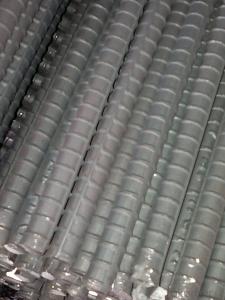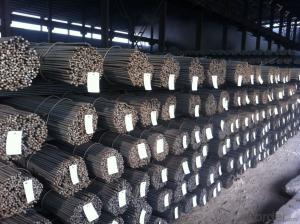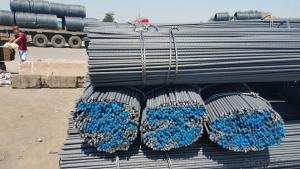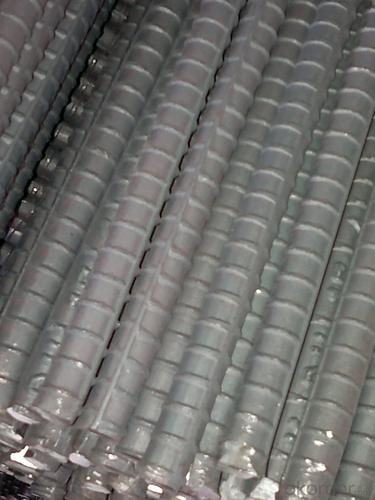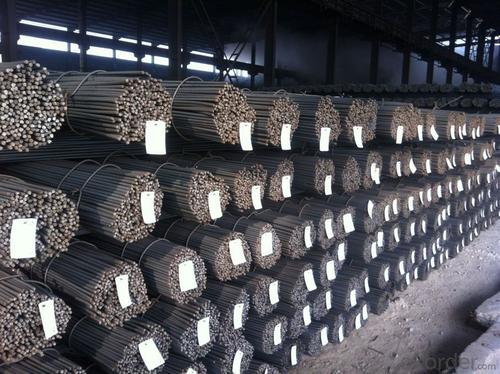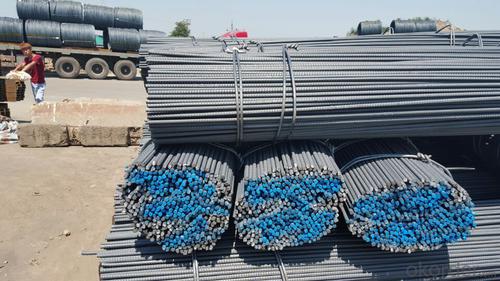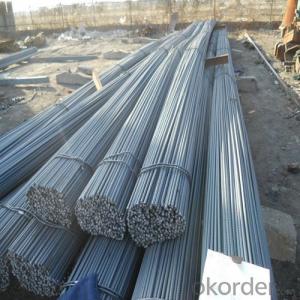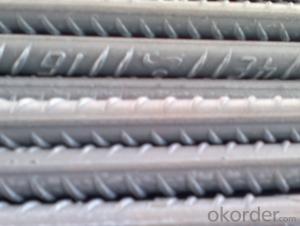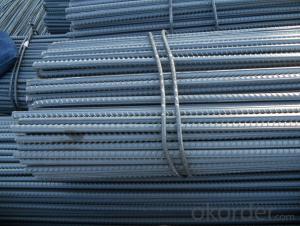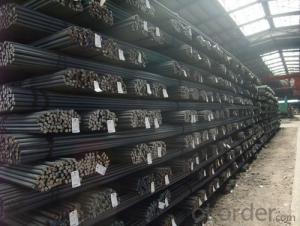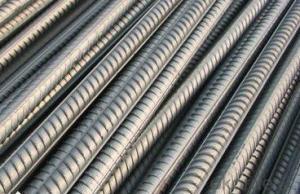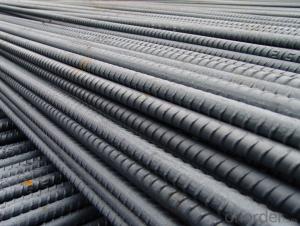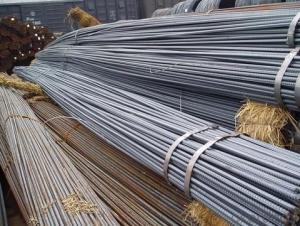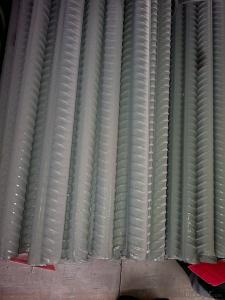Steel Reinforcing Rebars for Construction Concrete
- Loading Port:
- China main port
- Payment Terms:
- TT OR LC
- Min Order Qty:
- 100 m.t.
- Supply Capability:
- 10000 m.t./month
OKorder Service Pledge
OKorder Financial Service
You Might Also Like
Product Description:
OKorder is offering Steel Reinforcing Rebars for Construction Concrete at great prices with worldwide shipping. Our supplier is a world-class manufacturer of steel, with our products utilized the world over. OKorder annually supplies products to African, South American and Asian markets. We provide quotations within 24 hours of receiving an inquiry and guarantee competitive prices.
Product Applications:
Steel Reinforcing Rebars for Construction Concrete are ideal for structural applications and are widely used in the construction of buildings and bridges, and the manufacturing, petrochemical, and transportation industries.
Product Advantages:
OKorder's Steel Reinforcing Rebars for Construction Concrete are durable, strong, and wide variety of sizes.
Main Product Features:
· Premium quality
· Prompt delivery & seaworthy packing (30 days after receiving deposit)
· Can be recycled and reused
· Mill test certification
· Professional Service
· Competitive pricing
Product Specifications:
Manufacture: Hot rolled
Grade: HRB335,HRB400,HRB500
Certificates: ISO, SGS, BV, CIQ
Length: 6m – 12m, as per customer request
Packaging: Export packing, nude packing, bundled
Deformed Steel Bar | ||
Diameter (MM) | Cross Sectional Area (MM2) | Theorectical Weight (KG/M) |
6 | 28.27 | 0.222 |
8 | 50.27 | 0.395 |
10 | 78.54 | 0.617 |
12 | 113.1 | 0.888 |
14 | 153.9 | 1.21 |
16 | 201.1 | 1.58 |
18 | 254.5 | 2 |
20 | 314.2 | 2.47 |
22 | 380.1 | 2.98 |
25 | 490.9 | 3.85 |
28 | 615.8 | 4.83 |
32 | 804.2 | 6.31 |
36 | 1018 | 7.99 |
40 | 1257 | 9.87 |
Grade | Technical data of the original chemical composition (%) | |||||||
C | Mn | Si | S | P | B | |||
HRB335 | ≤0.25 | ≤1.60 | ≤0.80 | ≤0.045 | ≤0.045 | >0.0008 | ||
Physics capability | ||||||||
Yield Strength(N/cm2) | Tensile Strength(N/cm2) | Elongation (%) | ||||||
≥335 | ≥490 | ≥16 | ||||||
FAQ:
Q1: what is the difference between actual weight and theoretical weight?
A1: All the section steel has two weights: actual weight and theoretical weight. Actual weight is the weighing out when the product delivered from the mill. Theoretical weight is calculated by pieces. The invoice can be based on each of them as your request.
Q2: How many tons of steel products could be loaded in containers?
A2: Usually the steel products are delivered by bulk vessel because of the large quantity and the freight. However, there are no bulk vessel enter some seaports so that we have to deliver the cargo by containers. The 6m steel product can be loaded in 20FT container, but the quantity is changed according to the size, usually from 18tons to 25tons.
Q3: How soon can we receive the product after purchase?
A3: Within three days of placing an order, we will arrange production. The normal sizes with the normal grade can be produced within one month. The specific shipping date is dependent upon international and government factors, the delivery to international main port about 45-60days.
Images:
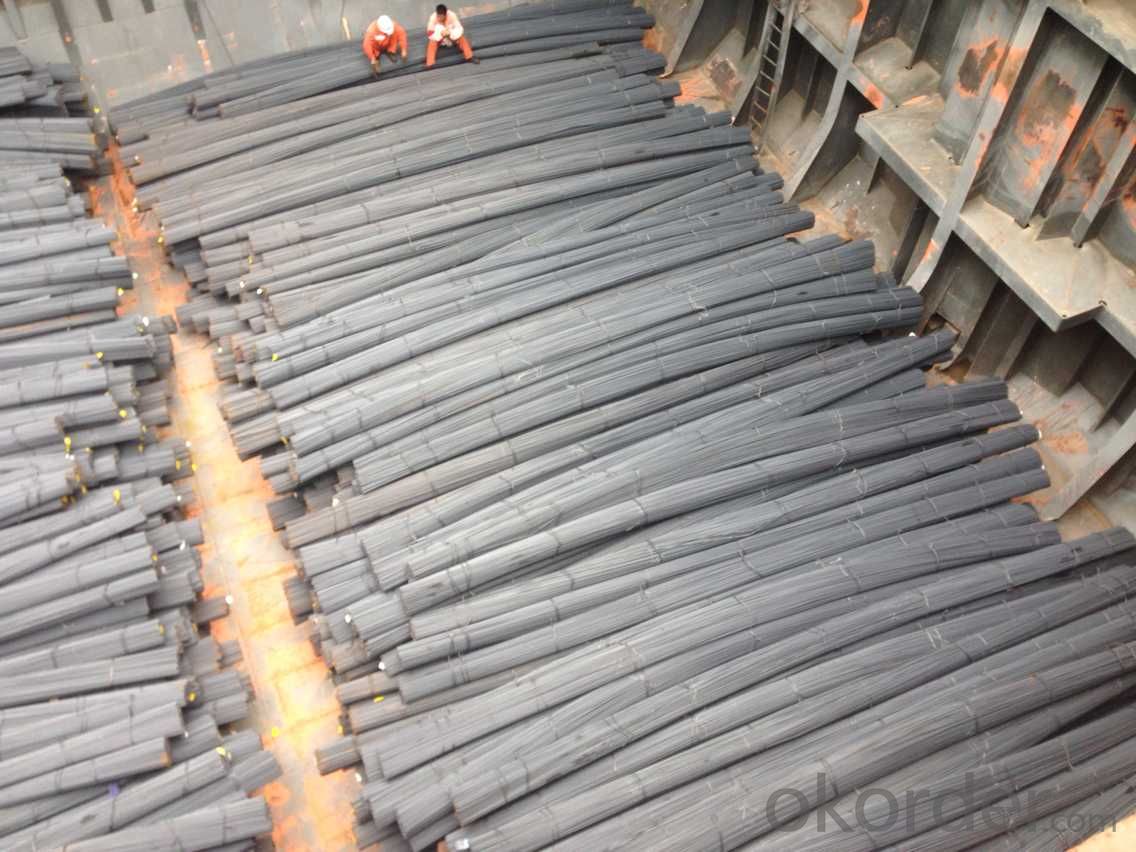
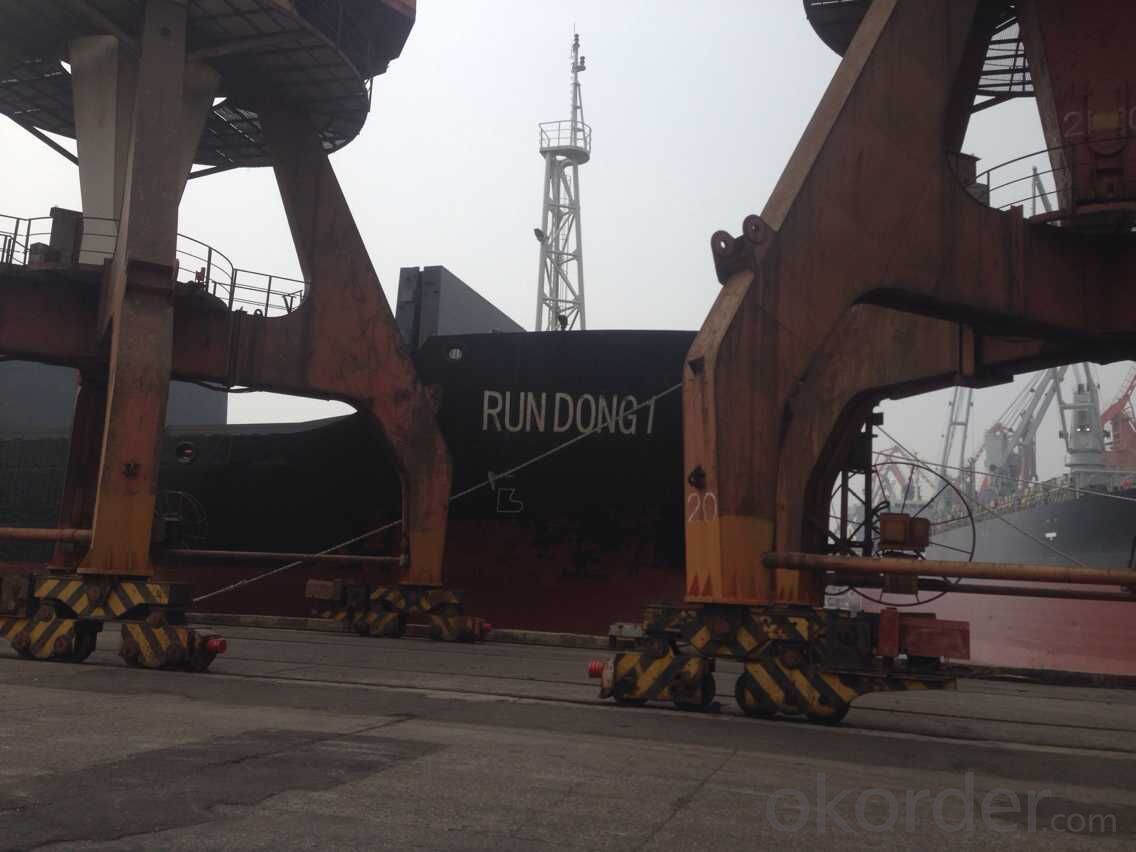
- Q: What is the maximum spacing allowed between vertical steel rebars in columns?
- The maximum spacing allowed between vertical steel rebars in columns typically depends on various factors such as the structural design requirements, column dimensions, load conditions, and local building codes. However, a common guideline is to keep the spacing between vertical rebars within 3-6 inches (7.6-15.2 centimeters) to ensure adequate structural integrity and reinforcement. It is essential to consult with a structural engineer or refer to the specific building codes and design specifications for accurate information regarding the maximum spacing allowed in a particular project.
- Q: What are the different types of steel rebars used in tunneling?
- The different types of steel rebars commonly used in tunneling include carbon steel rebars, epoxy-coated rebars, stainless steel rebars, and galvanized rebars. These rebars are chosen based on their specific properties and characteristics, such as strength, corrosion resistance, and durability, to ensure the tunnel structure's integrity and longevity.
- Q: Is cold-rolled ribbed steel bar thread steel?
- I haven't heard of cold-rolled steel. Cold rolling is called thin plate
- Q: Are there any limitations to using steel rebars in construction?
- Using steel rebars in construction has its limitations. For one, they can corrode when exposed to moisture and oxygen, especially in high humidity or coastal areas where saltwater can speed up corrosion. This corrosion weakens the structure over time, necessitating regular maintenance and inspections to prevent structural failure. Another limitation is their high thermal conductivity, which means they conduct heat and cold more easily than other materials. This can lead to increased energy transfer and potentially impact the overall energy efficiency of the building. Moreover, steel rebars are heavy and require specialized equipment for handling and installation. This raises construction costs and may restrict their use in applications where weight is a concern, such as high-rise buildings or areas with weak soil conditions. Further, steel rebars are vulnerable to electromagnetic interference, which can be problematic in buildings with sensitive electronic equipment or areas with high levels of electromagnetic radiation. Lastly, steel rebars are not environmentally friendly. Their production contributes to carbon dioxide emissions, and they have a high embodied energy, requiring a significant amount of energy for manufacturing and transportation. In conclusion, while steel rebars are widely utilized in construction for their strength and durability, it is crucial to consider these limitations and evaluate whether alternative materials or construction methods would be more appropriate for specific projects.
- Q: What are the different types of steel rebars used in industrial constructions?
- Industrial constructions commonly utilize various types of steel rebars, which play a crucial role in reinforcing concrete structures and imparting strength and durability to the overall construction. The key types of steel rebars frequently employed in industrial constructions are as follows: 1. Mild Steel Rebars, also referred to as black steel rebars, are the most prevalent type utilized in construction. These rebars, crafted from carbon steel, possess a smooth surface. They offer adequate strength and are cost-effective, rendering them suitable for a diverse range of industrial applications. 2. High-strength Deformed Steel Rebars (HSD) exhibit ribs or deformations on their surface, enhancing their bonding with concrete. HSD rebars, composed of carbon steel, undergo thermomechanical treatment to enhance their strength. They are commonly employed in heavy-duty industrial constructions requiring higher strength. 3. Epoxy-coated Rebars are coated with an epoxy resin to safeguard them against corrosion. These rebars find common usage in areas where concrete is exposed to moisture or chemicals, such as bridges and marine structures. The epoxy coating functions as a barrier, averting corrosion and prolonging the structure's lifespan. 4. Galvanized Rebars encompass a layer of zinc coating, bestowing them with corrosion resistance. The zinc coating acts as a sacrificial layer, shielding the steel rebars from rust. These rebars are frequently employed in areas where concrete is exposed to harsh environmental conditions or in coastal regions where the risk of corrosion is elevated. 5. Stainless Steel Rebars, recognized for their exceptional corrosion resistance, are utilized in environments necessitating remarkable durability and resistance to corrosion. They commonly find application in industrial constructions exposed to aggressive chemicals, high humidity, or extreme temperatures. Each type of steel rebar possesses distinct advantages and is suitable for diverse applications based on the specific requirements of the industrial construction project. It is imperative to meticulously consider factors such as strength, corrosion resistance, and cost when selecting the apt type of steel rebar for a particular construction endeavor.
- Q: Can steel rebars be used in seawater desalination plants?
- Yes, steel rebars can be used in seawater desalination plants. However, it is important to consider the potential effects of corrosion due to the high salt content in seawater. To mitigate this risk, various measures can be taken. One common approach is to use corrosion-resistant alloys, such as stainless steel rebars or epoxy-coated rebars, to protect against the corrosive effects of saltwater. Additionally, proper maintenance and monitoring can help prevent and identify any corrosion issues. Overall, while steel rebars can be used in seawater desalination plants, it is crucial to implement corrosion protection measures to ensure their longevity and structural integrity.
- Q: What is the lifespan of a steel rebar in a concrete structure?
- The lifespan of a steel rebar in a concrete structure can vary depending on various factors such as the quality of the rebar, the design and construction of the structure, and the environment it is exposed to. However, on average, steel rebars in concrete structures can last for several decades to even over a century if properly designed, constructed, and maintained.
- Q: How do steel rebars distribute loads in concrete structures?
- Steel rebars distribute loads in concrete structures by providing reinforcement and increasing the tensile strength of the concrete. The rebars are typically placed in the concrete in a grid-like pattern, creating a network of support throughout the structure. When the concrete is subjected to external loads, such as the weight of the building or the force of an earthquake, the rebars help distribute the load more evenly across the structure. This prevents the concrete from cracking or failing under the stress. Rebars work by transferring the tensile forces to the surrounding concrete. While concrete is strong in compression, it is relatively weak in tension. The rebars act as a reinforcement, resisting the tensile forces and preventing the concrete from cracking. When a load is applied to the structure, the rebars bear a portion of the load and distribute it to adjacent rebars and the surrounding concrete, effectively increasing the overall strength and stability of the structure. The distribution of loads in concrete structures is also influenced by the spacing and diameter of the rebars. Properly spacing the rebars ensures that the load is evenly distributed, minimizing the risk of localized stress concentration. The diameter of the rebars also plays a role in load distribution, as larger diameter rebars can withstand higher loads and provide more reinforcement. In addition to load distribution, steel rebars also help control the propagation of cracks within the concrete. When cracks do occur, the rebars help prevent them from spreading by transferring the stress around the cracked area and maintaining the structural integrity of the concrete. Overall, steel rebars play a critical role in distributing loads in concrete structures by providing reinforcement, increasing tensile strength, and controlling crack propagation. Their strategic placement and proper sizing ensure that the loads are evenly distributed, enhancing the durability and longevity of the structure.
- Q: How are steel rebars transported to the construction site?
- Various methods are employed for the transportation of steel rebars, also known as reinforcing bars, to construction sites. One commonly used approach involves the use of trucks. The rebars are loaded onto flatbed trucks or trailers and firmly secured with straps or chains to prevent any shifting during transit. These trucks are specially designed to withstand the weight and length of the rebars, boasting robust frames and loading mechanisms. Another method is rail transportation. Steel rebars can be loaded onto rail cars, either on flatcars or in specialized containers, and transported to the construction site. This method proves particularly advantageous for long-distance transportation, as it offers a more cost-effective and efficient solution for large quantities of rebars. For construction projects situated near waterways, the transportation of rebars can also be accomplished by sea or barge. The rebars are loaded onto ships or barges and properly secured to prevent any damage or movement during transit. This method is commonly employed for projects necessitating substantial quantities of rebars or for construction sites located on islands or in coastal areas. Upon arrival at the construction site, cranes or forklifts are typically utilized to unload the steel rebars. These rebars are then either stored in designated areas or immediately employed for reinforcement in the construction process. It is of utmost importance to handle the transportation of rebars with caution, as this ensures their structural integrity and guards against potential accidents or damage during transit.
- Q: Are steel rebars suitable for use in tunnels and underground mines?
- Tunnels and underground mines can benefit greatly from the use of steel rebars. These reinforcement bars, also called steel rebars, are commonly utilized in construction due to their strength and durability. In environments where structural integrity is crucial, such as tunnels and underground mines, steel rebars offer the necessary reinforcement to withstand the heavy loads and pressures associated with these settings. Steel rebars possess exceptional tensile strength, enabling them to resist bending and cracking even under high stress. This attribute is particularly important in tunnels and underground mines, where the surrounding rock and soil exert significant pressure on the structure. By reinforcing the concrete or other structural materials with steel rebars, the overall strength and stability of the tunnel or mine are enhanced, mitigating the risk of collapse or damage. Moreover, steel rebars exhibit resistance to corrosion, rendering them suitable for use in underground environments where moisture and chemical exposure are prevalent. Corrosion can weaken reinforcement materials, compromising the safety of the tunnel or mine. Conversely, steel rebars provide long-lasting reinforcement, ensuring the infrastructure's longevity and reliability. Additionally, steel rebars offer convenience in fabrication and installation, making them a practical choice for tunnel and underground mine construction. They can be easily cut and bent into specific shapes and sizes, facilitating customized reinforcement solutions tailored to the unique requirements of each project. This versatility and ease of installation make steel rebars an advantageous option for tunnels and underground mines, which often encounter complex geometries and challenging conditions. In conclusion, steel rebars are an ideal choice for tunnels and underground mines due to their strength, durability, corrosion resistance, and ease of installation. By utilizing steel rebars as reinforcement, these structures can be built to withstand demanding conditions, ensuring the safety of workers and the long-term viability of the infrastructure.
Send your message to us
Steel Reinforcing Rebars for Construction Concrete
- Loading Port:
- China main port
- Payment Terms:
- TT OR LC
- Min Order Qty:
- 100 m.t.
- Supply Capability:
- 10000 m.t./month
OKorder Service Pledge
OKorder Financial Service
Similar products
Hot products
Hot Searches
Related keywords
